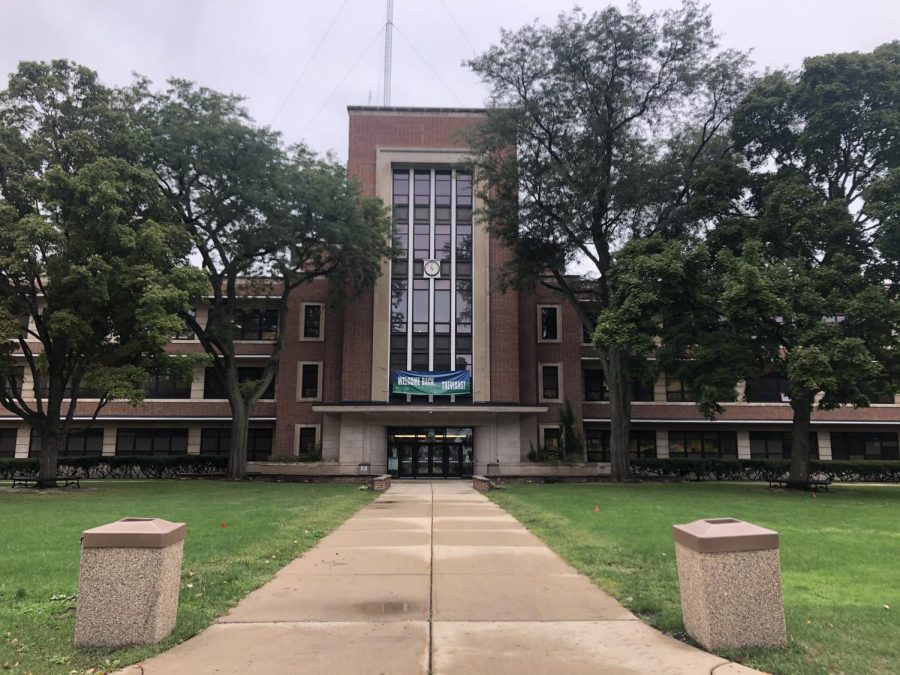“The New Trier Dilemma” inhibits student body
Trevians often must choose between activities for sake of time and stress management
NT News File Photo
At New Trier, the intense nature of extracurriculars prevents students in their pursuit of multiple activities and leadership opportunities
Since the first days of freshman year, students are encouraged by parents, teachers, and advisers to explore their interests and build smaller communities by joining organizations. However, the commitment level for many extracurriculars at New Trier and the greater North Shore community is so significant that it limits what students can participate in. As someone with at least a few interests, it’s frustrating that I have to choose between activities when I’d like to do them all.
This is what I’d call the “New Trier Dilemma”—a circumstance of the competitive, intense North Shore community in which students are strictly limited in how many activities they participate.
Stretched thin for time between homework and extracurriculars, students are only able to commit to one, two, or maybe three main activities. The main limiter for many students tends to be athletics, especially club athletics.
Athletics through New Trier entail a substantial amount of commitment. The three month season has two-hour practices or games everyday after school with competitions or practices sometimes on weekends, which would be fine given the brief season. However, travel sports on the North Shore require even more commitment on a week-to-week basis over the rest of the year. The schedule often consists of 2-3 weekly practices with some form of competition each and every weekend. The competition may be a local game, a local tournament, or even a tournament that requires substantial travel.
For athletes, between their travel sports and the demanding academic homework load, it doesn’t leave much time for other activities like joining a club at school or participating in an organization outside of school. It’s not like students can simply play in the school season and leave the other two-thirds for other activities. On the North Shore, sports are a year-around commitment, and students are expected to be involved with them in order to even have a chance to make their desired school team. At many other schools, students can easily participate in the fall season, for example, and then have freedom in the other two seasons in how they fill their time, whether that be with a club or two or even another school sport.
Personally, as someone who has done travel and New Trier soccer and volleyball for some time, I’ve had trouble engaging with some of my other interests. Many times, in the thrall of my seasons, I’ve been way too busy or even just too tired to go to an after-school club. Ideally, travel sports would involve less commitment while still being valuable and engaging.
The North Shore community should really reevaluate our relationship with travel sports. They place students in a small box that allows for little to no choice when it comes to other extracurricular activities.
Not only do students face issues with being involved in clubs, but also when trying to obtain positions of leadership. Especially for college applications, students are expected to be a type of leader involved in a few meaningful activities.
Some organizations require a certain level of dedication to be a part of the group or hold a leadership position. Leaders are often expected to attend every meeting and to plan club activities, which definitely takes some time and includes a degree of research and thought. This tends to be unattainable for club athletes given the time required for involvement in their sports.
The reality of high school should be, and sometimes is in less competitive areas, that students are able to explore their interests in a fuller capacity and engage with a variety of different communities in the school. It’s ridiculous and frustrating that Trevians sports in the greater North Shore community are so intense, time-consuming, and constraining that they trap students, caging them in the “New Trier Dilemma.”
A dissolution of this dilemma, though it may take a long time, would allow students to participate in the activities we want and assume the positions that interest us without an issue of stress or time. In being able to focus on at least a few disciplines outside of school, this participation would allot students new skills, new opportunities, and new information, all of which may have a ripple effect that could greatly benefit the academic environment.









































